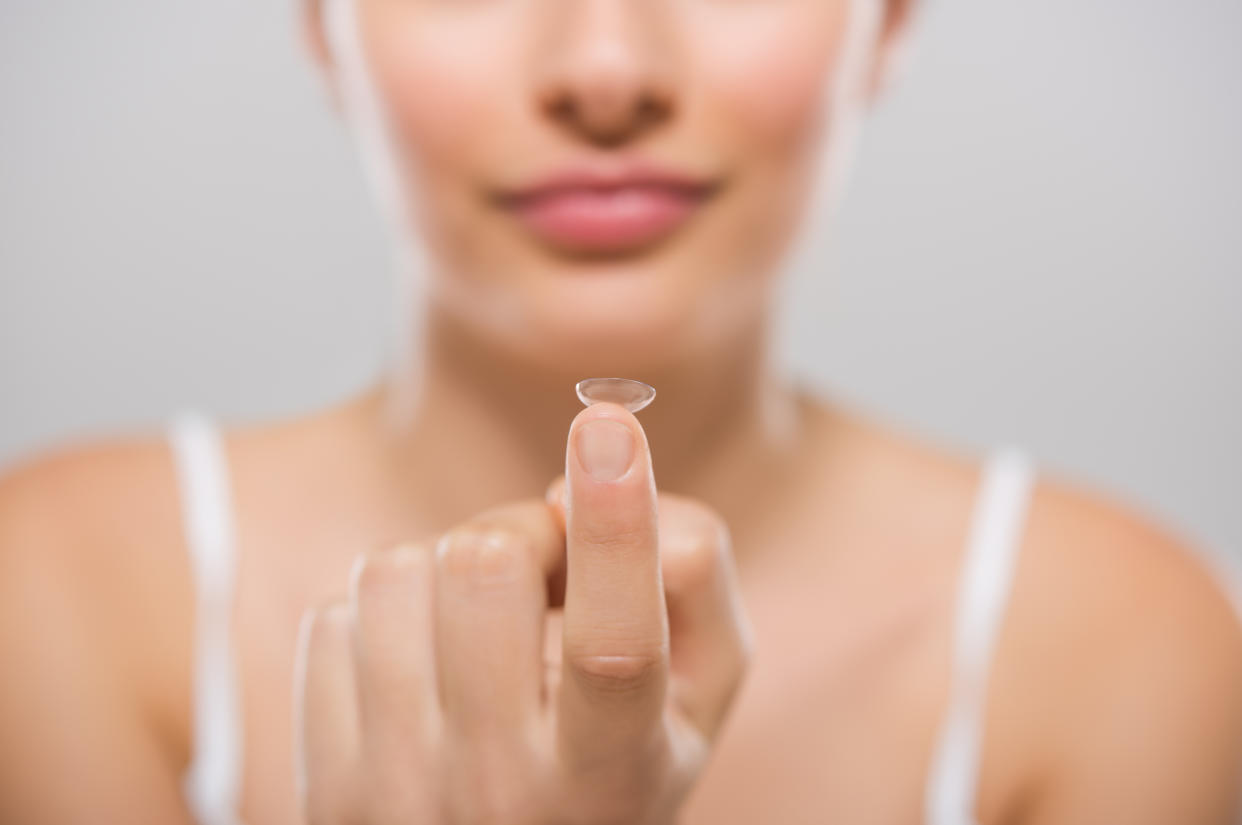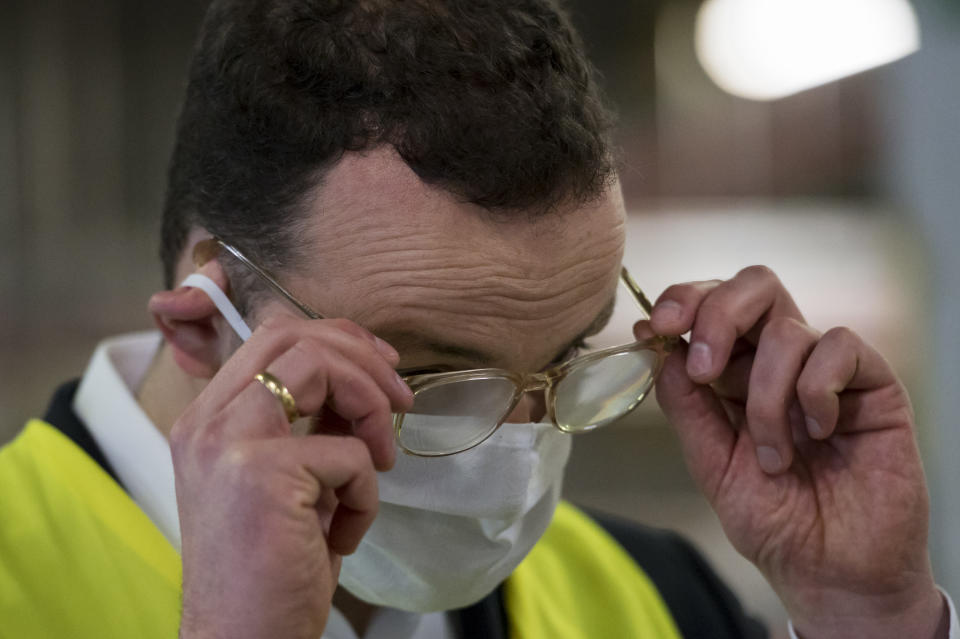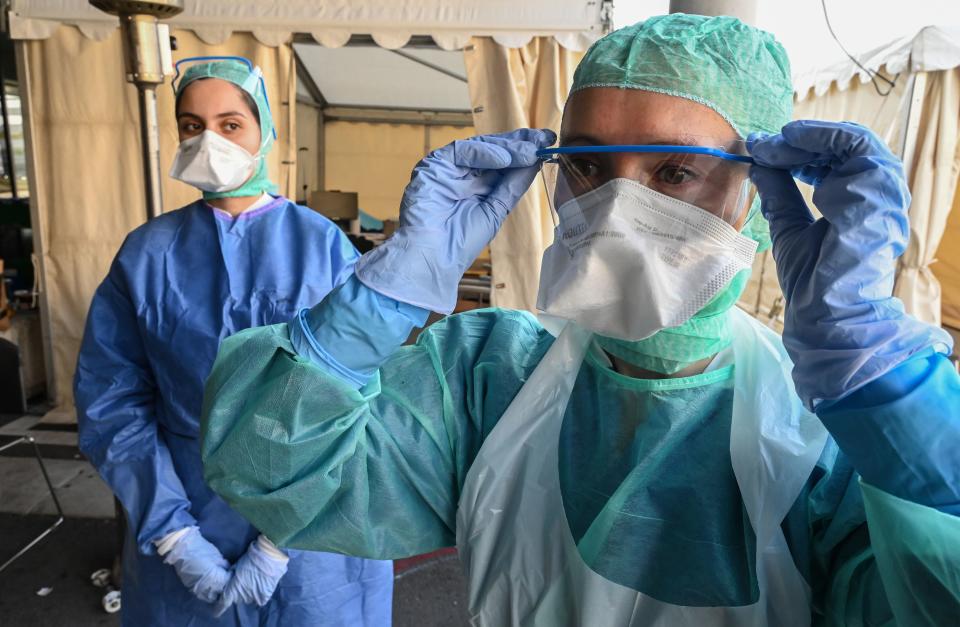Coronavirus: Is it safe to wear contact lenses?

Experts have confirmed it is safe to wear contact lenses amid the coronavirus outbreak.
Many users became concerned after officials announced the eyes are an entry point for the pathogen into the body.
There is also evidence the virus can survive on surfaces, raising fears wearers may “pick it up” on their hands, unwittingly infecting themselves when they put the lens in.
Experts have reassured it is safe to wear contact lenses during the pandemic, but hand hygiene is more important than ever.
Early research suggests the coronavirus is mild in four out of five cases, however, it can trigger a respiratory disease called COVID-19.

Coronavirus: Why it is safe to wear contact lenses
The coronavirus mainly spreads face-to-face via infected droplets expelled in a cough or sneeze.
It can also enter the body via the eyes, nose or mouth if contaminated hands touch these areas, hence why regular hand washing is a key message in the prevention campaign.
Latest coronavirus news, updates and advice
Live: Follow all the latest updates from the UK and around the world
Fact-checker: The number of COVID-19 cases in your local area
Explained: Symptoms, latest advice and how it compares to the flu
Despite these fears, the General Optical Council has issued advice to eye-care professionals on dispensing contact lenses during the UK’s lockdown, suggesting it does not advise people go without.
Others agree, but have stressed the importance of good hand hygiene.
“It’s still perfectly safe to wear contact lenses during this outbreak,” said Brendan O’Brien optometrist and chief operating officer at Vision Direct.
“But we know the virus can be transmitted through touching our eyes, nose and mouth, so it’s more important than ever that we are vigilant and scrupulously follow appropriate hygiene guidelines around lenses.”
For those working on the frontline, one medic claims contact lenses are more practical than glasses under personal protective equipment.
“Wearing glasses underneath a visor makes things a lot more complicated for those of us on the frontline needing vision correction”, said Lucas Fernández, a senior nurse at University College Hospital, London.
“Protective equipment is not made with breathable materials, making glasses fog up and slide down the nose, and the process of wiping them down or pushing them up at various points of the day is long and complex.
“We have to disinfect our hands, the mask and our glasses every single time we touch them, even if it’s with gloves.
“With contacts, you can safely insert [or] remove them at home and not have to worry about them during the day”.

Coronavirus: How to insert and remove contact lenses safely
Hygiene is always important when it comes to contact lenses, but now more than ever.
To ensure you can see clearly without risking infection, Vision Direct has put together the following contact-lens tips:
Disinfect and dry the surrounding area when you insert or remove your lenses. Try and do this while looking in a mirror that is not above sink. If a lens falls into a sink, it could absorb microbes from the water residue
Wash your hands thoroughly with soap and running water. Officials stress the process should take 20 seconds, the time it takes to sing Happy Birthday twice. If possible, dry your hands on a paper towel that immediately gets thrown away
Use daily disposable lenses. This will guarantee a sterile lens every day
Check the lens is the right way round before insertion to minimise contact with the eye
If using eye drops, ensure the tip of the bottle does not touch the eye. Hold it a few centimetres above
Never share contact lenses or cases, even if you have no coronavirus symptoms
Be particularly careful if opting for reusable lenses. First of all, ensure hands and surfaces are disinfected. Next, rub and rinse the lens for 30 seconds on both sides, before placing it into a clean case. Allow the lens to soak for at least four-to-six hours, depending on the solution
Clean the contact case with solution every time the lens is removed. Use a fingertip as an exfoliator to rub any debris from inside, before letting the lens air dry. Do not use regular soap or disinfectant, which can cause eye irritation

What is the coronavirus?
The coronavirus is one of seven strains of a virus class that are known to infect humans.
Others trigger everything from the common cold to severe acute respiratory syndrome (Sars), which killed 774 people during its 2002/3 outbreak.
Since the coronavirus outbreak was identified, more than 1.4 million cases have been confirmed worldwide, according to Johns Hopkins University.
Of these cases, over 330,700 are known to have “recovered”.
Globally, the death toll has exceeded 88,500.
While the coronavirus mainly spreads via coughs and sneezes, there is also evidence it may be transmitted in faeces.
Although most cases are mild, pneumonia can come about if the coronavirus spreads to the air sacs in the lungs.
This causes them to become inflamed and filled with fluid or pus.
The lungs then struggle to draw in air, resulting in reduced oxygen in the bloodstream and a build-up of carbon dioxide.
The coronavirus has no “set” treatment, with most patients naturally fighting off the infection.
Those requiring hospitalisation are given “supportive care”, like ventilation, while their immune system gets to work.
As well as regular hand washing, officials urge people ward off the coronavirus by maintaining social distancing.




